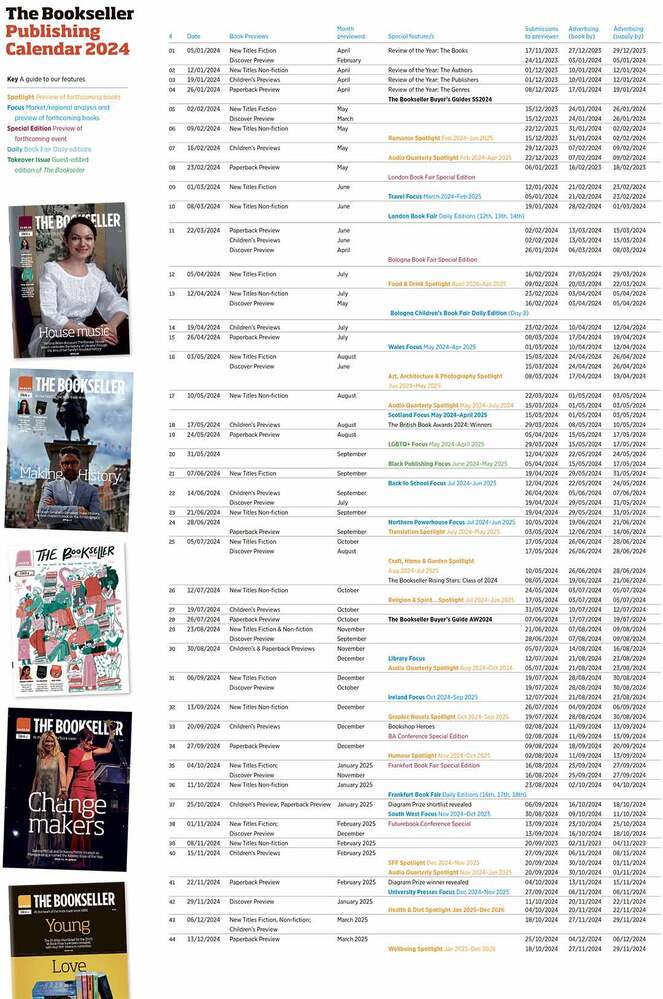You are viewing your 1 free article this month. Login to read more articles.
How British fiction breaks the rules
In the early 1960s my mother was on holiday with a friend. Her acquaintance was excited to discover that The Beatles were playing at the local dancehall. My mother was horrified. The band that she had once seen in the sweaty dives of Liverpool were now a household name; their leathers swapped for suits, their cool exchanged for stardom. They were no longer cutting edge. My mother refused to go. Instead, she insisted they bought tickets for the stratospherically uncool – and almost unlistenably twee – The Bachelors. It’s not the kind of decision one would expect to be discussing decades later, but still it crops up at family gatherings. And that’s the problem with the cutting edge: it is both woefully subjective and utterly defined by its time.
For me, the cutting edge is defined by work that rejects or departs from the dominant norms of its time. The novel needs to be looking for something new, something other, something that reflects its times in a slanted, alternative way, whether that be linguistically, stylistically or thematically. It looks forward, it looks back, and between the two it tussles for a different way to report our lives, thoughts and culture. In short, it should show readers something they have never seen before.
The Life and Opinions of Tristam Shandy, Gentleman (published in nine volumes between 1759-67) by Laurence Sterne [pictured] is the obvious place to begin in terms of the British cutting edge. Sterne is the grand master of the absurd, the unusual and the artfully tricksy. Here is a novel in which the eponymous hero doesn’t even turn up until volume three; a novel that delights in language and metatextual games. Dr Johnson famously hated it – but his definition of a novel as a “small tale, usually about love” shows how far Sterne had strayed from literature’s accepted tics.
Half a century later, the novel had become a more acceptable literary form, and the scene was set for the grand narratives of the Victorian age. But in the space of three years in the early 1820s, two books proffered a glimpse of a different kind of writing, a different set of concerns. Thomas de Quincey’s Confessions of an English Opium-Eater and James Hogg’s The Private Memoirs and Confessions of a Justified Sinner became not only the initial blueprint for the Victorian cutting edge – The Picture of Dorian Gray, The Strange Case of Dr Jekyll and Mr Hyde – but also for contemporary writers, most notably Irvine Welsh and Will Self.
In both works we see an interest in the darkness behind supposed respectability; an exploration of an alternative lifestyle. Both were shocking – something the cutting edge often aspires to be for schoolboyish reasons rather than literary ones – but it was their radical use of both structure and language that means they are still fresh today, and still able to find new readers. Other contemporaneous novels seem staid by comparison.
As the novel became the de facto literary mode in the 19th century, the cutting edge became the mainstream – as is often the case. The scope and heft of Dickens, Eliot, Charlotte Brontë, Wilkie Collins and their ilk – in combination with heavy censorship – meant that the period’s less dominant literary movements are mostly confined to the realms of scholars. Still, Emily Brontë’s Wuthering Heights deserves a mention. Any book that comes with an introduction from a more famous sibling apologising for the violence, mayhem and confusion within has to be doing something daring.
It was among the societal, intellectual and political changes of the 20th century that the British cutting edge really came into maturity. Virginia Woolf [pictured], Henry Green and Wyndham Lewis were the leading home-grown modernists, and their experiments gave rise to a constant stream of literary reinventions over the course of the early 20th century. But while Woolf has been a constantly adored and venerated writer, both Green and Lewis have often been overlooked and omitted from the literary canon.
Omission is often the currency for the cutting edge – work that was too far ahead of its time to be fully appreciated on its publication or that fell out of fashion too quickly. Patrick Hamilton, for example, was celebrated during his lifetime, but fell into a long period of critical cryogenics until the late 1990s. Most of his books are now, thankfully, back in print, including his 1947 masterpiece The Slaves of Solitude. His darkness, humour and playful disrespect for genre conventions make him a perfect model for today’s novelist. His near-contemporary, Gwyn Thomas, deserves a similar critical rebirth. The Dark Philosophers is one of the best books I’ve read in years; funny, serious, claustrophobic and wholly redolent of its time. Perhaps now is time for it to be considered cutting edge.
Thomas is not the only half-forgotten voice of the later 20th century. Anna Kavan, Ann Quin and B.S. Johnson (rescued from obscurity by Jonathan Coe’s superlative biography Like a Fiery Elephant) were writers unafraid to do things that didn’t sit well with the contemporary scene. Variously influenced by Beckett, the nouveau roman, modernism, Robert Graves, depression and drug addiction, these writers were at the vanguard of a movement that few people really cared to hear about. Kavan died of a heroin overdose in 1968; Johnson and Berg both committed suicide in 1973. All three wrote important, hugely overlooked books – Kavan’s Julia and the Bazooka, Ann Quin’s Berg, Johnson’s Christie Malry’s Own Double-Entry.
After these somewhat neglected writers passed away, British fiction lapsed into a period of upper- and middle-class solipsism during the pre-Thatcher era. The kitchen-sink dramas of Alan Sillitoe, John Braine, Keith Waterhouse and Nell Dunn had fallen out of favour, and the likes of Angus Wilson and Iris Murdoch were the overwhelming rulers of the British literary fiefdom. Had it not been for J.G. Ballard, it would have looked as though British fiction was content, to paraphrase Virginia Woolf, to “scratch its own pimples”.
Ballard is the writer that stands above all others in post-war British fiction. The 1983 Granta Best of Young British Novelists – including the now oh-so-familiar quartet of Amis, Barnes, Ishiguro and McEwan – may have been credited with the overhaul of the old guard, but it is Ballard who was already there, poking them with a big – and possibly illegal – stick.
The 1990s threw up a myriad of different kinds of expression. Lawrence Norfolk’s maximalist prose and historical themes were a very British counterpart to the formal invention of US authors such as David Foster Wallace. Norfolk’s slender output – just four novels, including the forthcoming John Saturnall’s Feast, in over 20 years – has not dimmed his reputation as a purveyor of very peculiar, and peculiarly brilliant, prose.
A few years after Norfolk’s 1991 debut Lemprière’s Dictionary, Irvine Welsh’s Trainspotting became the book to be seen with; a novel that almost defined the word ‘cult’. Even before the iconic posters of Sick Boy and Begbie were pasted up outside multiplexes, it was a book that was passed from reader to reader. It also served as an entry-level drug for a wide range of cutting-edge fiction: back to Alexander Trocchi, sideways to James Kelman or even, at a push, to Michael Moorcock and Alan Moore. While Welsh has never quite managed to replicate the incendiary brilliance of that book, its influence remains vital.
The immediate aftermath of Trainspotting was not good for cutting-edge fiction. Too many novels seemed to want to play up the drugs and violence angle of Welsh’s work. Authors such as Martin Millar, Stewart Home and Tony White – who had been around for some years, and were far more than just sensationalists – found themselves with a wider market as readers looked for the same kind of vicariously unpleasant thrills. This underground punk ethic – as enlivening as it had been – slowly became a kind of cutting-edge orthodoxy.
It took the emergence of two Davids – Mitchell and Peace – to blow away the hangover in the fag-end of the ’90s. Mitchell’s Ghostwritten and Peace’s Nineteen Seventy-Four looked to different kinds of narratives and influences to create something palpably exciting. Mitchell’s narrative techniques remain wonderfully eclectic, while Peace has emerged from the shadow of James Ellroy to arguably reinvent not only the British crime novel, but also the British historical novel in his own visceral prose style.
In many ways, it is reinvention rather than revolution which defines the contemporary cutting edge – as ever it was. Perhaps the most fêted of experimental British writers, Tom McCarthy, freely accepts that his fiction is drawn from a wide reading experience – from literary theory and philosophy to modernist classics. Despite this clear lineage, Remainder, his 2005-published debut, was a fresh alternative to the prevailing Victorian mode of the contemporary novel.
In our internet age, the web itself has become a haven for the avant garde; websites such as 3:AM Magazine (their tagline: “Whatever it is, we’re against it”), Eight Cuts and Beat the Dust champion new writers. But it would be reductive to say that this is where all the best writing now resides – the medium is irrelevant, it’s only the work that matters.
What the internet does allow, however, is the ability to search out new writers and new approaches. Authors such as Deborah Levy, Lee Rourke, Gwendoline Riley, Richard Millward, Ewan Morrison, Evie Wyld and Sarah Hall are broadening the reach of British fiction and are not, thankfully, toiling in obscurity. But as with the cutting edge throughout history, it is those that are as-yet undiscovered who will give us our next readerly thrills. And, as ever, we can only hope that it is more The Beatles than it is The Bachelors.
If This is Home by Stuart Evers is published by Picador














